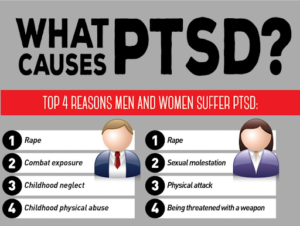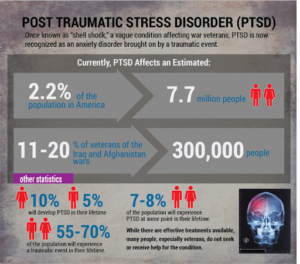Post-Traumatic Stress Disorder (PTSD): Understanding PTSD Symptoms and Causes
Post-Traumatic Stress Disorder, or PTSD is a mental health disorder that may develop after experiencing or witnesses a scary or life-threatning event. Learn more about the causes, symptoms, and effective treatment options here.

Symptoms – Post-traumatic stress disorder
The symptoms of post-traumatic stress disorder (PTSD) can have a significant impact on your day-to-day life.
In most cases, the symptoms develop during the first month after a traumatic event.
But in a minority of cases, there may be a delay of months or even years before symptoms start to appear.
Some people with PTSD experience long periods when their symptoms are less noticeable, followed by periods where they get worse. Other people have constant severe symptoms.
The specific symptoms of PTSD can vary widely between individuals, but generally fall into the categories described below.

Re-experiencing
Re-experiencing is the most typical symptom of PTSD.
This is when a person involuntarily and vividly relives the traumatic event in the form of:
- flashbacks
- nightmares
- repetitive and distressing images or sensations
- physical sensations, such as pain, sweating, feeling sick or trembling
Some people have constant negative thoughts about their experience, repeatedly asking themselves questions that prevent them coming to terms with the event.
For example, they may wonder why the event happened to them and if they could have done anything to stop it, which can lead to feelings of guilt or shame.
